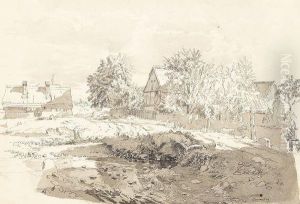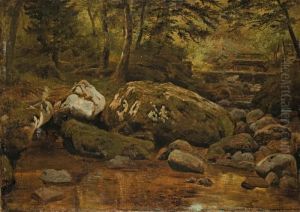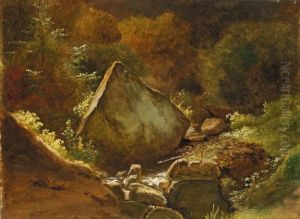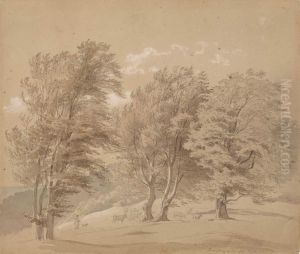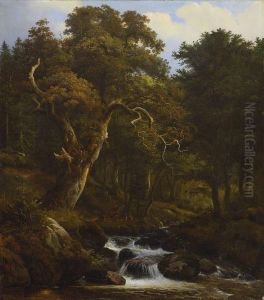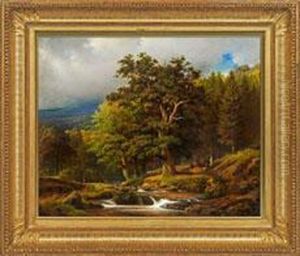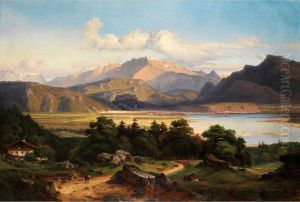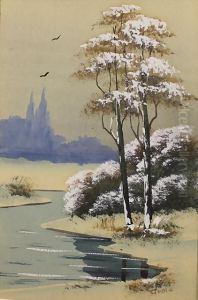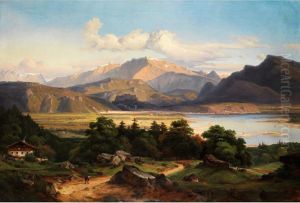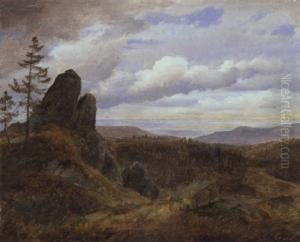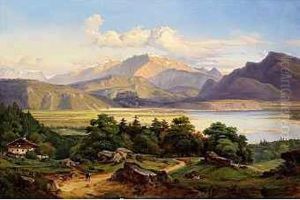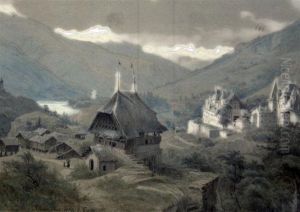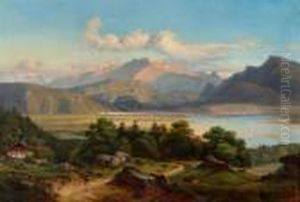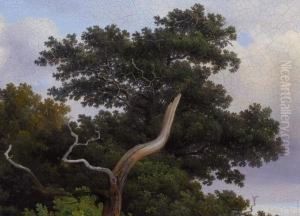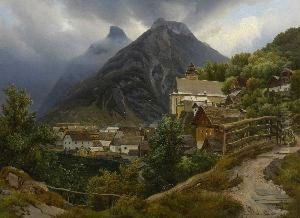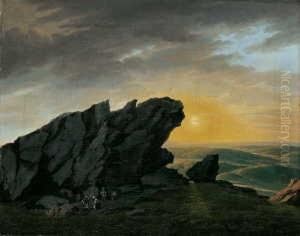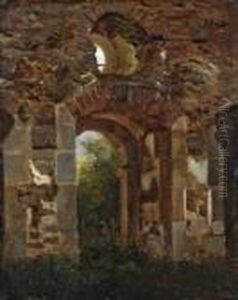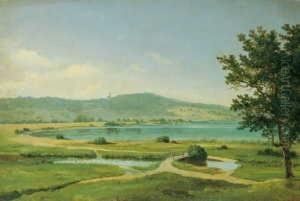Georg Heinrich Croll Crola Paintings
Georg Heinrich Croll, better known as Crola, was a distinguished German landscape painter born in Horneburg, Duchy of Brunswick, on January 22, 1804. Despite an early life marred by hardship and the early loss of his parents, Crola's profound talent and passion for art propelled him into the limelight of the 19th-century art world. His journey into the realm of painting began in earnest when he moved to Dresden in 1822, a city renowned for its vibrant artistic community and the presence of the Dresden Academy of Fine Arts. Initially working in the studio of landscape painter Caspar David Friedrich, Crola quickly developed a unique style that combined the meticulous detail of the Dutch school with the romantic sensibility of German landscape painting.
Throughout his career, Crola was often referred to as the 'German Ruysdael,' a nod to the influence of the 17th-century Dutch painter Jacob van Ruisdael, whose works were characterized by dramatic skies, lush forests, and a profound depth of perspective. Crola's landscapes, imbued with a sense of sublime beauty and an almost ethereal light, captured the imagination of the German public and critics alike. His ability to blend realism with romanticism set him apart from his contemporaries and solidified his place in the annals of art history.
Crola's most productive period spanned the 1830s and 1840s, during which he traveled extensively across Germany, drawing inspiration from the diverse landscapes of his homeland. His works from this period are marked by a keen attention to detail, a rich palette, and a masterful use of light and shadow. Despite facing competition from the emerging popularity of the Düsseldorf school of painting, Crola maintained a loyal following and continued to exhibit his works to critical acclaim.
Tragically, Crola's later years were overshadowed by personal misfortune and declining health. He passed away on October 18, 1879, in Düsseldorf, leaving behind a legacy that would influence generations of landscape painters. Today, Georg Heinrich Croll Crola is celebrated for his contributions to the Romantic movement and his enduring impact on the landscape genre. His works are preserved in several prominent museums and galleries, serving as a testament to his artistic vision and his deep love for the natural world.
